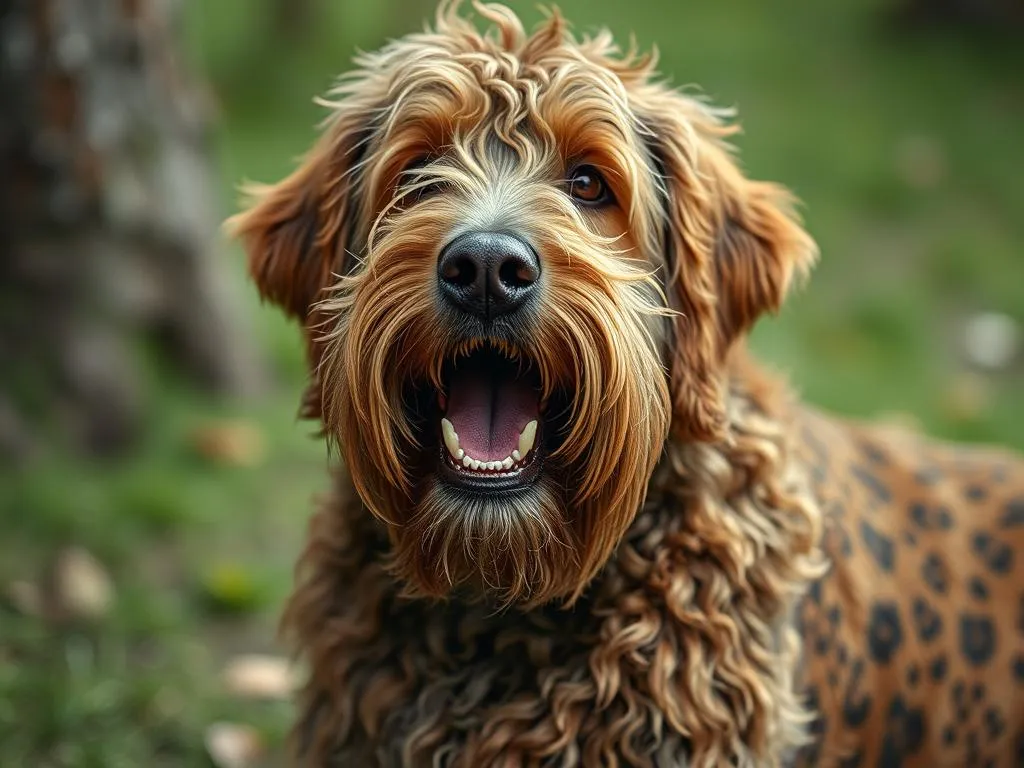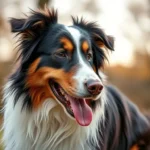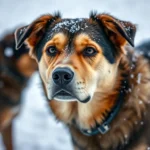
Introduction
Dog breeds play an essential role in human society, serving various purposes from companionship to work. Each breed has its unique characteristics shaped by history, environment, and human needs. Among these breeds, the Otterhound stands out due to its fascinating background and specialized skills. Originally bred for hunting otters and other aquatic game, this breed possesses unique traits that make it particularly suited for its purpose. In this article, we will delve into the world of dog breeds with a keen focus on the Otterhound, exploring its history, characteristics, and how it compares to other breeds.
Understanding Dog Breeds
Definition of Dog Breeds
A dog breed is a specific group of domestic dogs with consistent characteristics and behaviors, defined by lineage and breeding practices. These traits can include size, coat type, temperament, and specific abilities, all of which play a crucial role in pet ownership. Understanding these characteristics helps prospective dog owners choose a breed that fits their lifestyle and needs.
History of Dog Breeding
The development of dog breeds is deeply intertwined with human history. As humans evolved, so did their relationship with dogs. Initially, dogs were bred for specific tasks such as hunting, herding, and guarding. Over time, as societies advanced, so did the purposes of dog breeding, leading to the emergence of breeds like the Otterhound designed for specific types of game. Human needs have always influenced breed development, shaping the dogs we know today.
The Role of Kennel Clubs
Kennel clubs and breed registries play a pivotal role in maintaining breed standards and classifications. These organizations are responsible for formally recognizing and promoting dog breeds, establishing guidelines for breeding practices, and ensuring that breeds retain their desired traits. The standards set by kennel clubs help dog owners understand what to expect from their pets in terms of behavior, appearance, and health.
The Otterhound: An In-Depth Look
Origin and History
The Otterhound has a rich history that dates back to medieval England. Bred primarily for hunting otters, these dogs were essential to fishing communities, assisting in controlling otter populations that threatened fish stocks. The breed’s origins can be traced to a mixture of hounds and water dogs, which contributed to their unique skills and characteristics. With the decline of otter hunting in the 20th century, the Otterhound’s population dwindled, making it a rare breed today.
Physical Characteristics
Otterhounds are large, robust dogs that typically weigh between 65 to 115 pounds, with males generally larger than females. They stand about 24 to 27 inches tall at the shoulder. Their distinctive coat is water-resistant, consisting of a rough, wiry texture that can come in a variety of colors, including grizzle and tan, black and tan, or brown. One of their most notable features is their webbed feet, which enhance their swimming ability, along with long, droopy ears that help to capture scents while hunting.
Temperament and Behavior
Known for their friendly and affectionate nature, Otterhounds are great family pets. They are generally good with children and can be friendly towards other pets if socialized early. However, they possess a strong prey drive due to their hunting background, which may make them less suitable for households with small animals. Otterhounds are intelligent and independent thinkers, meaning they require consistent training and socialization to thrive in a home environment.
Health Considerations
Like all breeds, Otterhounds are prone to certain health issues. Common concerns include hip dysplasia, ear infections, and certain hereditary conditions. Regular health screenings and preventive care are crucial for maintaining their well-being. Responsible breeders will conduct health tests to minimize the risk of passing on genetic disorders, so it’s vital to choose a reputable source when acquiring an Otterhound.
Care and Maintenance
Caring for an Otterhound involves several key aspects:
-
Grooming Needs: Their wiry coat requires regular brushing to prevent matting and reduce shedding. Bathing should be done as needed but not too frequently to avoid stripping natural oils.
-
Exercise Requirements: Being an active breed, Otterhounds need a significant amount of exercise. Daily walks, playtime, and opportunities to swim are essential to keep them healthy and happy.
-
Nutrition: A balanced diet tailored to their age, size, and activity level is important. Consult a veterinarian for recommendations on high-quality dog food that meets their nutritional needs.
Comparing the Otterhound to Other Dog Breeds
Similar Breeds
Several breeds share similarities with the Otterhound, including the Labrador Retriever and the Bloodhound.
-
Labrador Retriever: Like the Otterhound, Labradors are known for their love of water and are also used in hunting, particularly for retrieving waterfowl. They are friendly and sociable, making them great family pets.
-
Bloodhound: Known for their incredible sense of smell, Bloodhounds share the Otterhound’s tracking abilities. They are also friendly and good with children, but they require diligent training due to their stubbornness.
Unique Qualities of the Otterhound
What sets the Otterhound apart from other breeds is its unique combination of traits suited for aquatic environments and hunting. Their webbed feet and water-resistant coat make them exceptional swimmers, while their keen sense of smell allows them to track scents over long distances. Unlike many breeds, Otterhounds have a distinctive playfulness and stubbornness that can make training both rewarding and challenging.
Choosing the Right Breed for You
When selecting a dog breed, consider factors such as lifestyle, living environment, and family dynamics. The Otterhound is ideal for active families or individuals who enjoy outdoor activities and can provide ample exercise. However, potential owners should be aware of their independent nature and the need for consistent training. Understanding these factors will help ensure a harmonious relationship between the owner and their dog.
Popular Dog Breeds Around the World
Overview of Popular Breeds
Some of the most popular dog breeds globally include:
- Labrador Retriever: Friendly and outgoing, Labradors are one of the most popular breeds, known for their intelligence and versatility.
- German Shepherd: Renowned for their loyalty and intelligence, German Shepherds are often used in police and military roles.
- Golden Retriever: Known for their friendly disposition and intelligence, Golden Retrievers excel in various roles, including therapy and assistance work.
- Bulldog: With a distinctive appearance, Bulldogs are gentle and affectionate companions, making them popular in urban environments.
Regional Preferences
Dog breed popularity can vary significantly by region. For example:
- In the United States, the Labrador Retriever consistently ranks as the most popular breed due to its friendly nature and adaptability.
- In the UK, the English Bulldog is a favorite, often seen in urban settings for its suitability as a companion dog.
- In Australia, the Australian Cattle Dog is favored for its herding capabilities and resilience in various climates.
The Importance of Responsible Dog Ownership
Commitment to Training and Socialization
Responsible dog ownership begins with a commitment to training and socialization. Early training is crucial for all breeds, including the Otterhound, to ensure they develop good manners and obedience. Socializing puppies with various people, environments, and other animals helps them grow into well-adjusted adults.
Ethical Considerations in Dog Breeding
The ethics of dog breeding are a significant concern in today’s society. Puppy mills, which prioritize profit over the health and well-being of dogs, should be avoided. Instead, prospective dog owners should seek out responsible breeders who prioritize health, temperament, and breed standards. Additionally, adopting from shelters and rescue organizations can provide a loving home to dogs in need while combating the issues associated with overpopulation.
Lifelong Care and Support
Owning a dog is a long-term commitment that includes providing lifelong care and support. Regular veterinary visits, a balanced diet, and proper exercise are essential for maintaining a dog’s health. Understanding the specific needs of the Otterhound and other breeds can help owners provide the best care possible.
Conclusion
Understanding dog breeds is essential for making informed decisions about pet ownership. The Otterhound is a unique and fascinating breed with a rich history, distinct characteristics, and specific needs. By exploring the nuances of various dog breeds, potential owners can find a companion that complements their lifestyle and preferences. Whether you’re drawn to the Otterhound’s hunting prowess or the friendly demeanor of a Labrador, thorough research is key to ensuring a fulfilling relationship with your canine friend.









